What is hosiery fabric
Hosiery fabric is a lightweight, stretchy knit, usually nylon blended with spandex, that hugs the body, recovers its shape, and is used for tights, stockings, and socks. Variations include microfiber nylon for softness, cotton hosiery fabric for breathability, and merino blends for winter warmth.
I test each pair with a ten minute walk, three sit and stand cycles, and a waistband roll check, then recheck after three washes to see if the knit bags or pills.
Hosiery fabric meaning, simple and practical
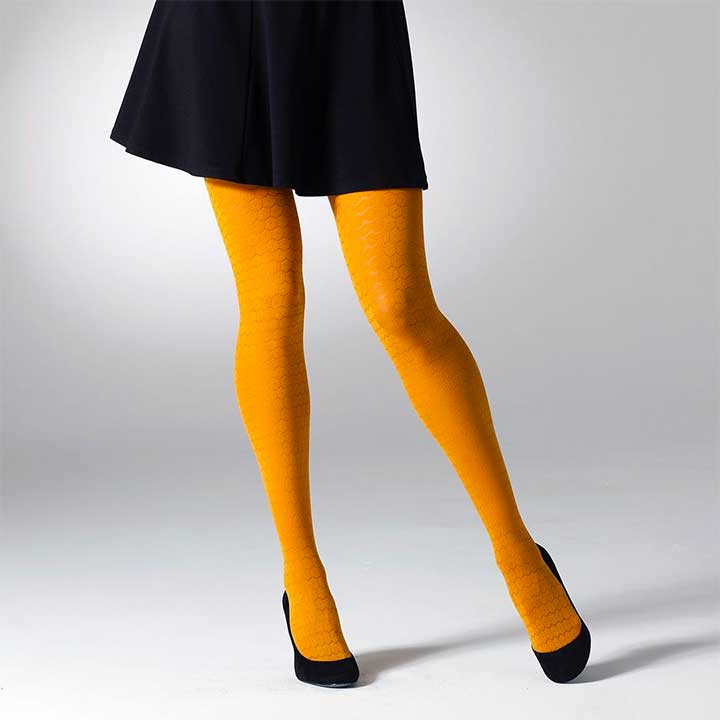
When people ask about hosiery fabric meaning, they want the basics. Think of a fine knit that stretches in two directions, feels smooth on skin, and snaps back without bagging. Most modern hosiery fabrics are nylon plus spandex. You will also see microfiber nylon for a softer, matte finish, and cotton fabric used in hosiery for socks and cozy opaque styles.
Hosiery fabric types, quick overview
These are the common types of hosiery fabric you will run into while shopping.
- Nylon, smooth, perfect for sheers, needs spandex for recovery.
- Spandex, elastane, adds snap and shape, not used alone.
- Microfiber nylon, ultra fine filaments, velvety feel, great for opaque looks.
- Polyester blends, budget color options, can feel cooler.
- Cotton hosiery fabric, breathable comfort in socks and sweater tights.
- Merino wool blends, warm, still breathable, ideal for cold weather.
- Compression knits, zoned support for long days and travel.
Need help finding the right size? Try our dress size calculator for a quick check before you buy tights or clothing.
Hosiery fabric vs cotton, what actually feels different

Hosiery fabric vs cotton comes down to stretch, sheerness, and recovery. Nylon with spandex gives that sleek, close fit and allows very low denier for sheer styles. Cotton fabric often used in hosiery adds softness and breathability, but if spandex is low it can bag at the knees by midday. For everyday tights I reach for microfiber nylon with 10 to 20 percent spandex. For socks or sweater tights, cotton or merino blends feel great.
Quick comparison
| Feature | Hosiery fabric, nylon blend | Cotton hosiery fabric |
|---|---|---|
| Feel | Smooth to velvety with microfiber | Soft and breathable |
| Stretch and recovery | Excellent with spandex | Good if spandex is 8 percent or higher |
| Sheer styles | Best choice, very low denier possible | Rare, usually opaque |
| Warmth | Light to medium, depends on denier | Medium, warmer in thicker knits |
| Durability vs runs | Better in opaque microfiber, delicate in sheers | Good in thicker knits, may pill if quality is low |
| Best for | Sheer to opaque tights, control top, compression | Socks, sweater tights, casual opaque styles |
If you like this comparison, see our guide on ways to become a more conscious consumer for smarter shopping decisions.
Denier basics, sheer to opaque
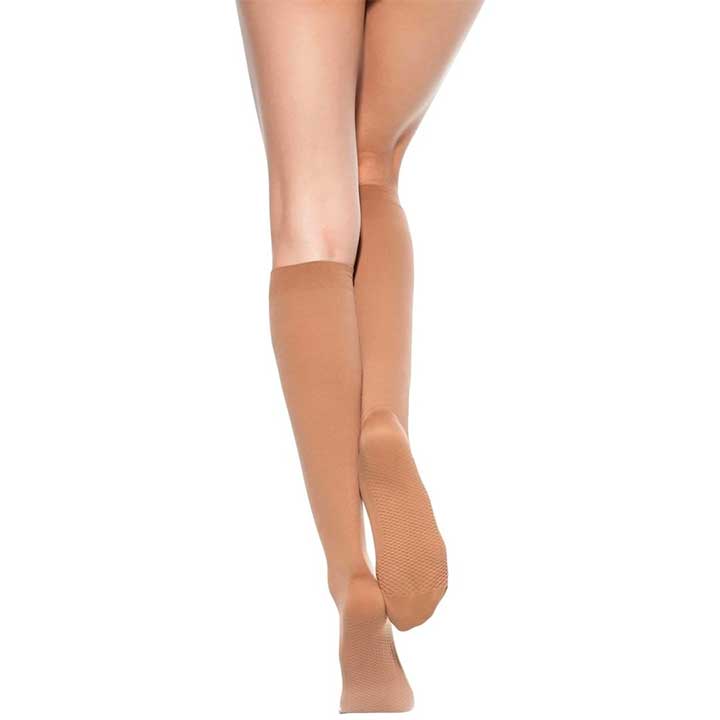
- 10 to 20 denier, very sheer, dressy, most delicate.
- 30 to 40 denier, semi sheer, everyday friendly.
- 50 to 80 denier, opaque, matte, sturdier.
- 100 denier plus, very opaque and cozy for winter.
I keep three pairs on rotation, a 15 denier for nights out, a 60 denier microfiber for work, and a 120 denier merino blend for cold mornings.
Blends that matter, why the mix changes comfort
- Nylon plus spandex, the classic hosiery material for fit and shape.
- Microfiber plus spandex, soft hand, great for office friendly opaques.
- Merino wool plus nylon plus spandex, warm without bulk, good odor control.
- Cotton hosiery meaning in blends, cotton adds breathability, spandex keeps the shape.
I skip opaque tights with less than 6 percent spandex. In my tests those slip or bag by lunch.
The best hosiery fabrics by type, with blends and denier
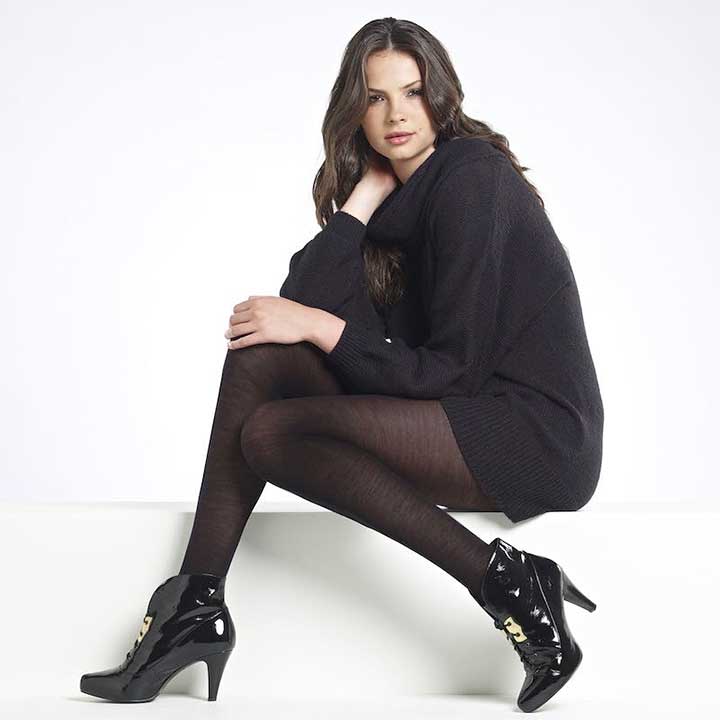
Use this as a fast buyer’s guide.
| Hosiery fabric type | Typical blend | Best denier range | Feel on skin | Stretch and recovery | Best for |
|---|---|---|---|---|---|
| Nylon hosiery fabric | 80 to 90 percent nylon, 10 to 20 percent spandex | 10 to 40 | Smooth, sleek | Excellent | Sheer and semi sheer tights |
| Microfiber nylon | 70 to 85 percent microfiber nylon, 15 to 20 percent spandex | 50 to 80 | Very soft, matte | Excellent | Opaque, office friendly looks |
| Cotton hosiery fabric | 60 to 80 percent cotton, 10 to 30 percent nylon, 8 to 12 percent spandex | 60 to 120 | Soft, breathable | Good if spandex is ≥ 8 percent | Socks, sweater tights |
| Merino blend | 40 to 60 percent merino, 30 to 50 percent nylon, 5 to 10 percent spandex | 80 to 150 | Warm, cushy | Good | Winter and travel |
| Compression knit | Nylon and spandex with zoned design | Varies | Firm, supportive | Targeted | Long shifts, flights |
Is hosiery fabric good for summer
Yes, if you choose light denier. Is hosiery fabric good for summer depends on thickness and knit. Pick 10 to 20 denier nylon with spandex for airflow and a barely there feel. Skip heavy control panels on hot days. If you run warm, try sheer knee highs or no show socks instead of full tights.
Care and longevity, keep fibers happy
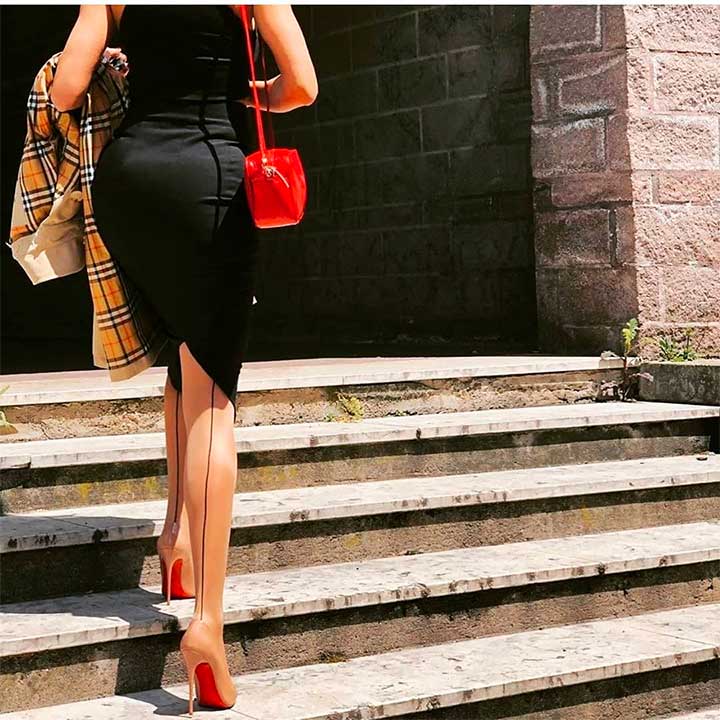
- Wash in a mesh bag, cold water, gentle cycle.
- Skip fabric softener, it can weaken elastic over time.
- Air dry, heat shortens the life of spandex.
- Dab a fresh snag with clear nail polish to slow a run.
- Rotate pairs so elastics recover between wears.
Learn more in our clothing care tips to keep all your fabrics lasting longer.
Hosiery fabric good or bad, quick take
Hosiery fabric good or bad depends on use and blend. Nylon blends win for sleek fit and sheerness. Cotton blends win for breathable comfort. Match hosiery fabric types to your day, then care for them so they last.
Quick picks by need
- Dressy and cool, sheer nylon, 15 to 20 denier, reinforced toe.
- Office comfort, microfiber nylon plus spandex, 60 to 80 denier, flat seams.
- Winter warmth, merino blend, 120 denier or lined.
- All day support, light compression hosiery with a comfort waistband.
- Sensitive skin, cotton blend socks or opaque tights with higher spandex for shape.
Hosiery fabric FAQ
What is hosiery fabric?
It is a stretchy knit, usually nylon with spandex, used for tights, stockings, and socks. Microfiber, cotton, and merino blends change softness and warmth.
What is hosiery material vs fabric?
People use both phrases for the same thing. The composition and knit matter more than the wording.
What are the main hosiery fabric types?
Nylon, spandex, microfiber nylon, polyester blends, cotton blends, merino blends, and compression knits.
Is hosiery fabric good for summer?
Yes, choose 10 to 20 denier nylon with spandex and avoid heavy control panels in heat.
Hosiery fabric vs cotton, which is better?
For tights, nylon plus spandex wins for sleek fit and sheerness. For socks or sweater tights, cotton hosiery fabric or merino blends feel great.
Cotton hosiery fabric meaning, what does it include?
It is a cotton rich knit blended with nylon and spandex so it stretches and keeps its shape. Plain cotton without stretch bags faster.




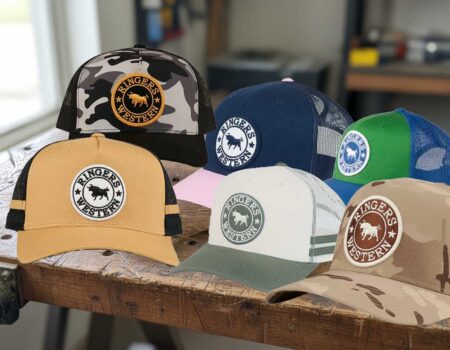

2 Comments
The author is right about Nylon. it is about the most comfortable and best fitting material you can wear on your legs. I have no trouble wearing hosiery in summer and sweat much less than going barefoot. I prefer Nylon to Silk.
Thanks for sharing your thoughts Carla. I totally agree, Nylon really does offer that perfect blend of comfort and fit. It’s great to hear that you find it so comfortable, even in the summer heat. And it’s interesting to know that you prefer it over Silk. Everyone has their own favorites, and it’s always cool to hear what works best for others. Happy hosiery wearing!